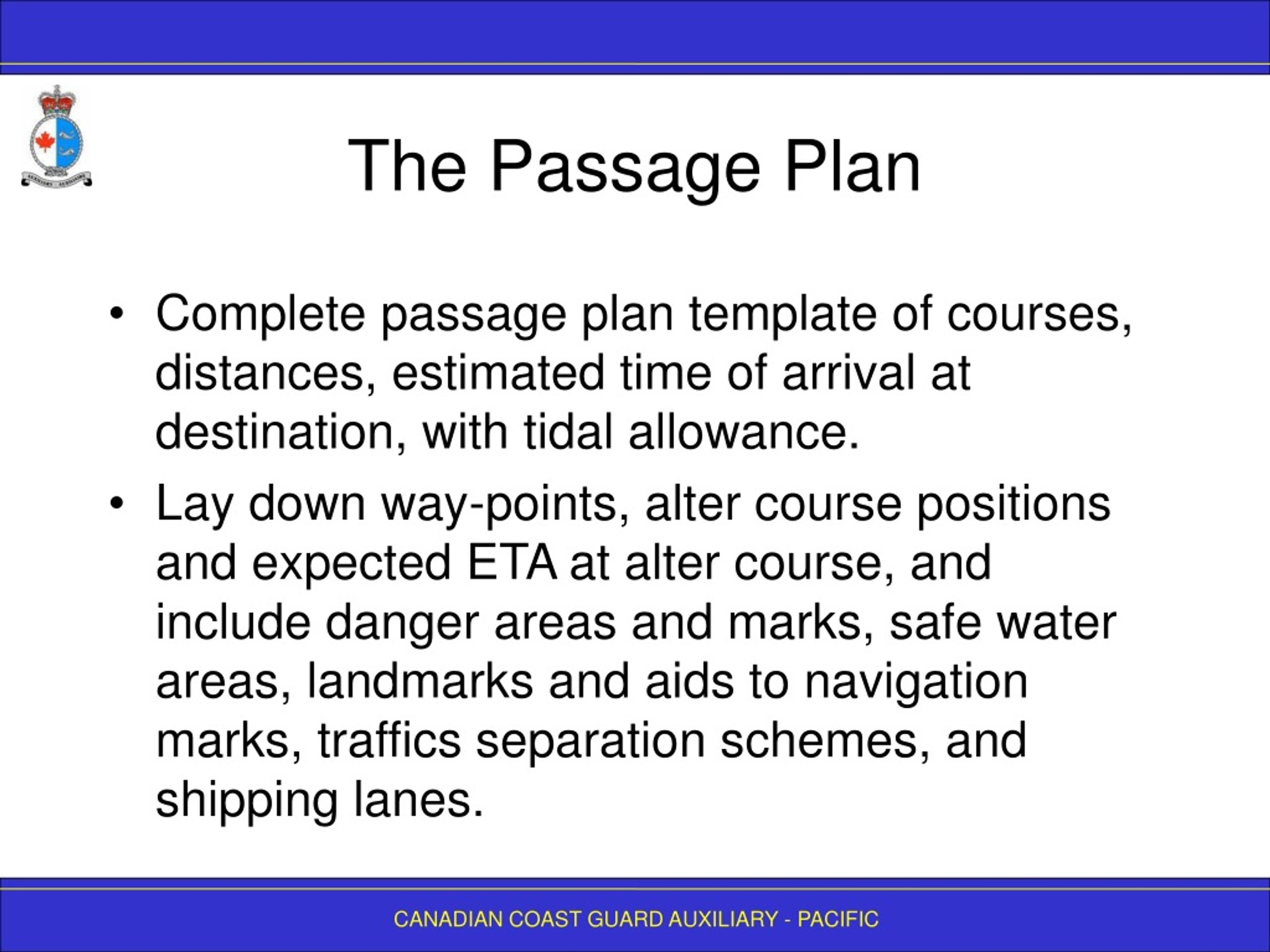Planning a safe and efficient passage at sea is crucial for any maritime voyage. A passage plan template is a structured document that helps mariners outline the necessary steps to navigate from one point to another. This template serves as a guide for the crew to follow, ensuring that all potential hazards are identified and mitigated.
When creating a passage plan template, it is important to consider factors such as weather conditions, navigational hazards, traffic separation schemes, and emergency procedures. By having a well-designed template in place, the crew can effectively manage risks and ensure the safety of the vessel and its occupants.
Passage Plan Template
A passage plan template typically includes sections for voyage details, route planning, navigational aids, communication procedures, and contingency plans. Here are some key components that should be included in a passage plan template:
1. Voyage Details: This section should include information such as the departure and arrival ports, estimated time of departure and arrival, distance to be covered, and expected weather conditions.
2. Route Planning: In this section, the planned route should be outlined, including waypoints, course alterations, and potential hazards along the way. Considerations should be made for factors such as currents, tides, and traffic patterns.
3. Navigational Aids: Include a list of navigational aids that will be used during the passage, such as GPS, radar, charts, and visual landmarks. Ensure that all equipment is in working order and that the crew is familiar with its operation.
4. Communication Procedures: Outline how communication will be maintained with shore-based authorities, other vessels, and emergency services. Include contact information for relevant agencies and protocols for distress calls.
5. Contingency Plans: It is essential to have contingency plans in place for unexpected events, such as equipment failure, adverse weather, or medical emergencies. Outline procedures for responding to these situations and designate responsibilities to crew members.
By following a well-structured passage plan template, mariners can navigate safely and efficiently, ensuring a successful voyage. Regular reviews and updates to the template will help to adapt to changing conditions and improve overall safety measures.
In conclusion, a passage plan template is a valuable tool for mariners to ensure safe and efficient navigation at sea. By incorporating key components such as voyage details, route planning, navigational aids, communication procedures, and contingency plans, crews can effectively manage risks and respond to emergencies. Investing time in creating and updating a passage plan template can make a significant difference in the success of a maritime voyage.
